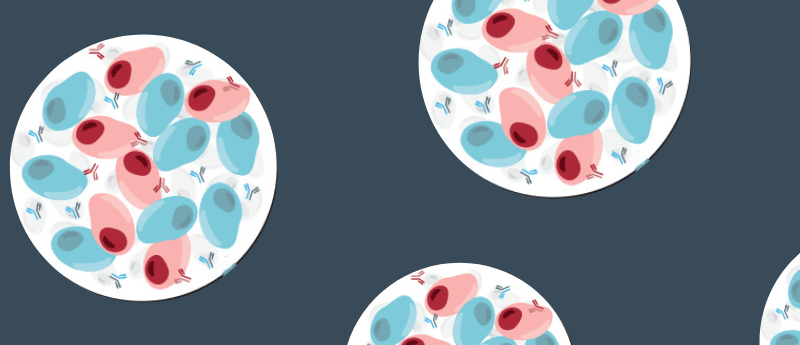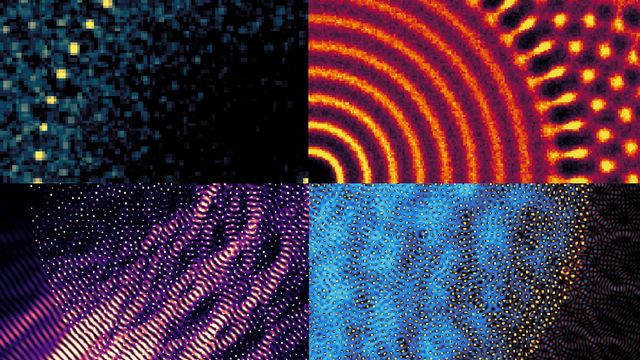Introduction
Heart failure (HF) is a primary manifestation of the end stage of various cardiovascular diseases, characterized by reduced cardiac pumping function that fails to meet the body’s metabolic demands. This condition is associated with high morbidity, hospitalization rates, and mortality, significantly impairing patients’ quality of life and imposing a substantial burden on social, economic, and healthcare resources.1,2 Statistics indicate that approximately 64 million people worldwide suffer from heart failure, with its prevalence increasing significantly with age, particularly among the elderly population.3–5 Despite continuous advancements in modern medical technology, the treatment of heart failure remains a formidable challenge. Effectively improving cardiac function, reducing rehospitalization rates, and lowering mortality are critical issues in clinical research.
In recent years, sacubitril/valsartan, a novel angiotensin receptor-neprilysin inhibitor (ARNI), has emerged as a promising therapeutic option for heart failure. Numerous clinical studies have demonstrated that sacubitril/valsartan not only significantly improves cardiac function indicators but also reduces hospitalization rates and all-cause mortality in heart failure patients.6–8 This study aims to retrospectively analyze the effect of conventional cardiology drug therapy combined with sacubitril/valsartan on improving cardiac function in heart failure patients. It further evaluates its efficacy in regulating neuroendocrine function, reversing ventricular remodeling, and enhancing patients’ quality of life and exercise tolerance. The findings will provide more clinical evidence for comprehensive heart failure treatment while validating the safety and efficacy of sacubitril/valsartan, offering guidance for optimizing therapeutic strategies.
Subjects and Methods
Study Subjects
This study included patients diagnosed and treated for heart failure at our hospital between March 2022 and December 2023 to ensure a representative sample. Following a rigorous and comprehensive screening based on inclusion criteria, a total of 110 patients were enrolled. Patients were divided into a control group and an experimental group based on treatment methods. The control group received conventional cardiology drug therapy, while the experimental group received conventional cardiology drug therapy combined with sacubitril/valsartan. This study has used propensity score matching (PSM) method to optimize inter group comparability, and the specific implementation is as follows: Selection of matching variables: based on clinical relevance and literature support, age, gender, NYHA cardiac function classification, course of disease, prevalence of hypertension/diabetes, baseline LVEF value, NT proBNP level, serum creatinine and eGFR were selected as matching variables to ensure coverage of key confounding factors affecting treatment selection and prognosis. Propensity score calculation: The probability of each patient receiving the combination therapy of sacubitril/valsartan was calculated using a logistic regression model. The model included the matching variables mentioned above and validated the model discrimination (C-index=0.82). Matching implementation: The 1:1 nearest neighbor matching method was used, with a caliper value set at 0.2 times the standard deviation. Finally, 55 pairs of samples were successfully matched, and the standardized differences after matching were all<0.1, confirming a significant improvement in inter group balance. Balance validation: Baseline data was compared between the matched samples, and the results showed no statistically significant differences in key indicators such as age, gender, cardiac function grading, and glomerular filtration rate (eGFR) between the two groups (P>0.05). Clinical data were collected and summarized through medical records and other methods, and statistical methods were employed for quantitative analysis of the results. This study adhered to the principles of the Declaration of Helsinki and was reviewed and approved by the Ethics Committee of The First People’s Hospital of Yongkang City, Zhejiang Province. Due to the retrospective nature of the study, our ethics committee waived the requirement for informed consent (This study only used existing medical record data and did not intervene in any patients). Privacy safeguards for all case data included: anonymization prior to data collection, with removal of personally identifiable information (eg, names, ID numbers); establishment of a tiered access control system, granting authorized researchers exclusive access to complete datasets; and presentation of aggregated clinical data in publications to eliminate individual information disclosure risks.
Sample size calculation basis and method:
This study adopts a retrospective queue design and estimates the sample size based on the following parameters:
Effect size: According to prior research, the expected difference between the experimental group and the control group in the primary endpoint (such as LVEF improvement) is 5%, with a standard deviation of 8%.
Statistical efficacy (1- β): Set at 90%, ensuring a 90% probability of detecting the true effect.
Significance level (α): 0.05 (bilateral).
Loss of follow-up rate: Reserve 10% of the sample size to compensate for missing or lost data.
Calculation formula (based on t-test):
n = (Z1−α/2+Z1−β)2×σ2/δ2
among which
Z1 − α/2=1.96 (when α = 0.05),
Z1 − β=1.28 (when β = 0.10),
σ = 8 (standard deviation),
δ = 5 (effect quantity).
Calculation result:
n = (1.96+1.28)2×82/52≈42.3
Each group requires about 43 cases, and the actual effective data is 55 cases (after matching).
Statistical validity analysis verification
Verify the statistical validity of the existing sample size through G * Power software:
Input parameters: Effect size δ=5%, standard deviation σ=8%, α=0.05, sample size n=55 for each group.
Output result: Statistical power (1- β)=92.3%, indicating that with the current sample size, there is a 92.3% probability that the study will detect the expected effect, meeting the predetermined 90% power requirement.
Inclusion and Exclusion Criteria
Inclusion Criteria: Patients met the diagnostic criteria for heart failure;9–11 had a life expectancy of at least six months with stable vital signs; were aged 18 years or older; and had complete clinical data.
Exclusion Criteria: Patients with severe hepatic or renal dysfunction; those with endocrine disorders or autoimmune system dysfunction; individuals with a history of malignant tumors; those with severe arrhythmias, malignant hypertension, cerebral hemorrhage, or cerebral infarction; and those with known allergies to the study drugs.
Methods
Control Group
Patients assigned to the control group underwent a standard course of conventional cardiology drug therapy. This regimen encompassed the administration of two primary medications: Benazepril Hydrochloride Tablets: Manufactured by Huahai Pharmaceutical Co., Ltd., located in Zhejiang, China, and bearing the National Drug Approval Number H20233426, benazepril hydrochloride is an angiotensin-converting enzyme (ACE) inhibitor. The prescribed dosage for each intake was 5 mg, and patients were instructed to take this medication twice daily, ensuring a consistent therapeutic level over a 24-hour period. This dosing schedule was maintained for a continuous duration of 8 weeks. Metoprolol Succinate Extended-Release Tablets: Produced by AstraZeneca Pharmaceuticals, with the National Drug Approval Number J20150044, metoprolol succinate is a beta-blocker known for its extended-release properties, allowing for once-daily dosing. Initially, patients were prescribed a dose of 95 mg per day. However, the dosage could be adjusted based on individual patient tolerance, which was assessed through regular monitoring of vital signs, symptoms, and any adverse reactions. This personalized approach to dosing was also carried out over an 8-week period.
Experimental Group
Patients in the experimental group received an enhanced therapeutic protocol that built upon the foundation of the control group’s treatment, with the notable addition of sacubitril/valsartan sodium: Sacubitril/Valsartan Sodium: This medication is a combination drug that merges the actions of sacubitril, a neprilysin inhibitor, and valsartan, an angiotensin II receptor blocker (ARB). It was manufactured by Novartis Farma S.p.A., previously known as Novartis Singapore Pharmaceutical Manufacturing Private Ltd., and was repackaged by Beijing Novartis Pharmaceuticals Co., Ltd. The drug carries the National Drug Approval Number HJ20170363 (previously J20190002). Dosage and Administration: The initial dosage prescribed for sacubitril/valsartan sodium was 100 mg per dose, taken twice daily. This dosing strategy was chosen to achieve a rapid and sustained therapeutic effect. Similar to the control group’s regimen, the experimental group’s treatment span was also 8 weeks. Throughout this period, patients’ responses to the medication, including any changes in blood pressure, heart rate, and overall well-being, were closely monitored to ensure both efficacy and safety. The twice-daily dosing of sacubitril/valsartan sodium was designed to maintain stable plasma concentrations of the active ingredients, thereby optimizing the drug’s beneficial effects on cardiac function and reducing the risk of adverse cardiovascular events.
Observational Indicators
Clinical Efficacy
Clinical efficacy was categorized into three levels: marked effect, effective, and ineffective. Total efficacy was calculated as the sum of marked and effective rates.
Marked Effect
Significant alleviation of clinical symptoms after treatment, with heart function classification improving by more than two grades compared to pre-treatment.
Effective
Some improvement in clinical symptoms, with heart function classification improving by 1–2 grades compared to pre-treatment.
Ineffective
No significant improvement in clinical symptoms or heart function classification.
Cardiac Function Indicators
Cardiac function indicators included left ventricular ejection fraction (LVEF), stroke volume (SV), cardiac output (CO), left ventricular end-systolic diameter (LVESD), and left ventricular end-diastolic diameter (LVEDD). These were measured using echocardiography after treatment.
Myocardial Injury
Indicators included N-terminal pro-brain natriuretic peptide (NT-proBNP), homocysteine (Hcy), and cardiac troponin I (cTnI). After treatment, 4 mL of fasting venous blood was collected from patients, centrifuged at 3,000 r/min for 10 minutes, and stored frozen. A BK-600 automated biochemical analyzer and corresponding reagent kits (Production company: Saipei Biotechnology, location: Wuhan, China) were used for detection via enzyme-linked immunosorbent assay (ELISA).
Neurohormones
Neuroendocrine hormones such as norepinephrine (NE), aldosterone (ALD), and angiotensin II (AngII) were measured. Blood samples were collected post-treatment and analyzed using radioimmunoassay methods, the reagent kit is provided by BIOESN, located in Shanghai, China.
Exercise Tolerance
The 6-minute walk test (6MWT) was used to assess exercise tolerance and cardiopulmonary function by measuring the maximum walking distance patients could achieve in 6 minutes. Measurements were taken before and after treatment. The patient walks back and forth on a 30 meter long straight line and records the maximum distance traveled within 6 minutes. Before the experiment, patients need to sit quietly and rest for 10 minutes. During the experiment, patients are allowed to rest appropriately according to their own situation.
Quality of Life
Use the Minnesota Heart Failure Quality of Life Questionnaire (MLHFQ), which covers physical, emotional, and other areas, with a total score ranging from 0 to 105, with lower scores indicating better quality of life.
Adverse Reactions
All adverse reactions were recorded, including headaches, hepatic or renal dysfunction, and hyperkalemia. The incidence of adverse reactions was calculated.
Statistical Methods
Graphs in this study were processed using GraphPad Prism 8. Data organization and analysis were performed using SPSS 26.0. Measurement data were expressed as mean ± standard deviation (), and comparisons between groups were conducted using the t-test. Count data were expressed as [n (%)], and comparisons between groups were performed using the chi-square (χ2) test. Statistical significance was set at P < 0.05.
Results
Baseline Data
The experimental group included 55 patients, aged 49–88 years (78.21 ± 9.17 years), with 24 males and 21 females. Their heart function classifications were: Class II (35 cases) and Class III (20 cases), and their disease duration ranged from 4–10 years (6.87 ± 1.25 years). The control group included 55 patients, aged 49–88 years (78.57 ± 8.35 years), with 25 males and 20 females. Their heart function classifications were: Class II (37 cases) and Class III (18 cases), and their disease duration ranged from 4–10 years (7.03 ± 1.17 years). The baseline characteristics of the two groups were comparable (P > 0.05) (Table 1).
 |
Table 1 Comparison of Baseline Data Between the Two Groups
|
Clinical Efficacy
The total clinical efficacy rate in the experimental group was 94.55%, significantly higher than the 78.18% observed in the control group, with a statistically significant difference (P < 0.05). See Figure 1.
 |
Figure 1 Comparison of Total Clinical Efficacy Rates Between the Two Groups.
Note: *indicates a significant difference between the two groups, P < 0.05.
|
Cardiac Function Indicators
After treatment, the LVEF, SV, and CO levels in the experimental group were higher than those in the control group, while the LVESD and LVEDD levels were significantly lower in the experimental group than in the control group (P < 0.05). See Table 2.
 |
Table 2 Comparison of Cardiac Function Indicators Between the Two Groups
|
Myocardial Injury
After treatment, the levels of NT-proBNP, Hcy, and cTnI in the experimental group were significantly lower than those in the control group (P < 0.05). See Figure 2.
 |
Figure 2 Comparison of Myocardial Injury Biomarker Levels Between the Two Groups.
Note: *indicates a significant difference between the two groups, P < 0.05.
|
Neurohormones
After treatment, the levels of NE, ALD, and AngII in the experimental group were significantly lower than those in the control group (P < 0.05). See Figure 3.
 |
Figure 3 Comparison of Neuroendocrine Hormone Levels Between the Two Groups.
Note: *indicates a significant difference between the two groups, P < 0.05.
|
Exercise Tolerance
After treatment, the 6MWT level in the experimental group was higher than that in the control group (P < 0.05). See Figure 4.
 |
Figure 4 Comparison of 6MWT Levels Between the Two Groups.
Note: *indicates a significant difference between the two groups, P < 0.05.
|
Quality of Life
After treatment, the MLHFQ score in the experimental group was lower than that in the control group (P < 0.05). See Figure 5.
 |
Figure 5 Comparison of MLHFQ Scores Between the Two Groups.
Note: *indicates a significant difference between the two groups, P < 0.05.
|
Adverse Reactions
There was no significant difference in the occurrence of adverse reactions between the two groups. Treatment with Sacubitril/Valsartan did not result in a significant increase in adverse reactions (P > 0.05). See Table 3.
 |
Table 3 Comparison of Adverse Reactions Between the Two Groups
|
Discussion
Heart failure (HF) is a complex syndrome caused by structural and functional abnormalities of the heart, primarily characterized by decreased cardiac function, reduced exercise tolerance, and impaired quality of life. Although traditional cardiology medications can alleviate symptoms to some extent, they have limitations in improving long-term outcomes of the disease.12–15 In recent years, Sacubitril/Valsartan, a novel drug with a unique dual mechanism of action, has demonstrated significant advantages in the treatment of heart failure. Sacubitril/Valsartan inhibits neprilysin activity, thereby enhancing the natriuretic peptide system to promote diuresis, vasodilation, and antifibrotic effects. Concurrently, it blocks angiotensin II receptors, reducing the activity of the renin-angiotensin-aldosterone system (RAAS), which alleviates cardiac burden and reduces the risk of ventricular remodeling.16,17 This study further investigated the effects of combining Sacubitril/Valsartan with conventional cardiology medications. The results showed that this combined treatment regimen significantly improved patients’ cardiac function, enhanced exercise tolerance, and improved quality of life. These findings provide a new direction and valuable reference for the clinical treatment of heart failure.
Regarding the improvement of cardiac function, the study demonstrated that patients in the experimental group showed significantly greater improvements in cardiac function indicators, including left ventricular ejection fraction (LVEF), stroke volume (SV), and cardiac output (CO), compared to the control group. Additionally, their left ventricular end-systolic diameter (LVESD) and left ventricular end-diastolic diameter (LVEDD) were significantly reduced. Conventional treatments for chronic heart failure typically include inotropic agents, diuretics, and vasodilators, with Benazepril Hydrochloride Tablets and Metoprolol Succinate Extended-Release Tablets being commonly used medications. Benazepril Hydrochloride, an angiotensin-converting enzyme inhibitor, works by blocking the conversion of angiotensin and inhibiting kininase activity, which reduces the degradation of bradykinin. This leads to vasodilation, reduced blood pressure, improved cardiac blood flow, and restored cardiac function. Metoprolol Succinate Extended-Release Tablets, a highly selective β1-receptor blocker, reduce heart rate and myocardial contractility, thereby decreasing myocardial oxygen demand and lowering blood pressure. Furthermore, Metoprolol can inhibit ventricular remodeling, slow the progression of heart failure, and prevent sudden cardiac death. Sacubitril/Valsartan, as a novel angiotensin receptor-neprilysin inhibitor (ARNI), combines the dual effects of inhibiting neprilysin activity and blocking angiotensin receptors. It inhibits vasoconstriction, promotes vasodilation, reduces cardiac afterload, significantly improves myocardial function, lowers the risk of ventricular remodeling, decreases rehospitalization rates, and helps stabilize the disease.18–20 Studies have shown that combining Sacubitril/Valsartan with conventional therapeutic medications not only further enhances the heart’s pumping ability but also effectively reverses ventricular remodeling and significantly improves cardiac function. This provides more comprehensive support for the treatment of chronic heart failure.
Previous studies have found that excessive activation of the neuroendocrine system is considered one of the key factors in the pathogenesis of heart failure.21–23 Abnormal elevation of neuroendocrine hormone levels, such as the excessive release of norepinephrine (NE), aldosterone (ALD), and angiotensin II (Ang II), not only serves as a compensatory response to heart failure but also accelerates myocardial cell remodeling, fibrosis, and the deterioration of heart function. This abnormal activation exacerbates ventricular remodeling and cell apoptosis by enhancing sympathetic nervous system excitability and the activity of the renin-angiotensin-aldosterone system (RAAS), leading to further worsening of heart failure. Therefore, inhibiting neuroendocrine activity has become a core strategy in the treatment of heart failure. Sacubitril/Valsartan, through its dual mechanism of action, has shown significant effects in inhibiting the excessive activation of the neuroendocrine system. On the one hand, as an angiotensin receptor blocker (ARB), it selectively binds to and blocks the Ang II receptor, inhibiting the vasoconstriction and sodium retention induced by Ang II, thereby reducing cardiac load, lowering vascular resistance, and improving cardiac pumping ability. On the other hand, Sacubitril/Valsartan, as a neprilysin inhibitor, enhances the function of the natriuretic peptide system, promotes vasodilation, inhibits myocardial cell hypertrophy and fibrosis, and reduces the risk of ventricular remodeling. The results of this study indicate that after combined treatment, the levels of neuroendocrine hormones in patients significantly decreased, particularly NE, ALD, and Ang II, which were notably lower than those in the control group. This suggests that Sacubitril/Valsartan can effectively regulate neuroendocrine activity, thereby delaying the progression of heart failure and reducing the incidence of long-term complications, consistent with previous similar studies. A study by domestic scholars also mentioned that Sacubitril/Valsartan could reduce the generation of Ang II by inhibiting renin release, blocking its adverse effects on the heart and blood vessels, and further alleviating cardiac burden. By reducing the excessive activation of neuroendocrine hormones, this drug not only improves cardiac function and quality of life in patients but also effectively prevents further deterioration of ventricular remodeling and cardiac tissue damage.24–26 This study confirms the important role of Sacubitril/Valsartan in the treatment of heart failure, providing solid evidence for optimizing clinical management strategies.
Myocardial injury is an important indicator for assessing the severity of heart failure. This study shows that the levels of N-terminal pro B-type natriuretic peptide (NT-proBNP), homocysteine (Hcy), and cardiac troponin I (cTnI) in the experimental group were significantly lower than those in the control group, indicating that Sacubitril/Valsartan has a significant advantage in alleviating myocardial injury. The mechanism of action primarily involves inhibiting neprilysin activity, reducing natriuretic peptide degradation, promoting water and sodium excretion, thereby alleviating water and sodium retention, stabilizing blood pressure, and reducing cardiac load, while improving heart function. In addition, Sacubitril/Valsartan optimizes the metabolic environment of myocardial cells, reduces myocardial stress responses, significantly protects myocardial function, and suppresses the secretion of myocardial injury markers such as NT-proBNP, Hcy, and cTnI.27,28 This result further confirms the remarkable effect of combined treatment in repairing myocardial injury, improving heart function, and protecting the myocardium, providing reliable clinical evidence for the treatment of heart failure patients.
Moreover, the 6-minute walk test (6 MWT) and the Minnesota Living with Heart Failure Questionnaire (MLHFQ) are important tools for assessing exercise tolerance and quality of life in heart failure patients. This study demonstrates that the experimental group showed significantly greater improvement in both of these indicators compared to the control group. This not only reflects the overall improvement in the functional status of patients with combined treatment but also indicates that Sacubitril/Valsartan can help patients better cope with physical activity in daily life. Drug safety is an important factor that cannot be overlooked in clinical application. In this study, the incidence of adverse reactions between the two groups showed no significant difference, and the experimental group did not experience a significant increase in adverse reaction risks due to the use of Sacubitril/Valsartan. This suggests that the drug has a high level of tolerance, providing strong support for its clinical promotion.29–31
Significance and Limitations
This study, through retrospective analysis, confirmed the significant effect of combined conventional cardiology drug treatment and Sacubitril/Valsartan in improving heart function in heart failure patients. However, this study still has some limitations, such as a limited sample size and a short follow-up period. Future research with multi-center, large sample sizes and long-term follow-up is needed to further validate the results of this study. And that future research could consider incorporating continuous monitoring and genetic parameter surveys to more comprehensively evaluate treatment efficacy.
Conclusion
Combined conventional cardiology drug treatment and Sacubitril/Valsartan show significant advantages in the treatment of heart failure patients. This approach not only effectively improves heart function but also provides comprehensive protection by regulating neuroendocrine activity, alleviating myocardial injury, and reversing ventricular remodeling. Moreover, this treatment significantly enhances exercise tolerance and quality of life for patients and demonstrates good safety, highlighting its high clinical application value. As a new strategy for heart failure management, this combined treatment offers an important direction for optimizing treatment outcomes and has broad implications for promotion.
Disclosure
The authors report no conflicts of interest in this work.
References
1. Dick SA, Epelman S. Chronic heart failure and inflammation: what do we really know? Circ Res. 2016;119(1):159–176. doi:10.1161/CIRCRESAHA.116.308030
2. Rogers C, Bush N. Heart failure: pathophysiology, diagnosis, medical treatment guidelines, and nursing management. Nurs Clin North Am. 2015;50(4):787–799. doi:10.1016/j.cnur.2015.07.012
3. Sinnenberg L, Givertz MM. Acute heart failure. Trends Cardiovasc Med. 2020;30(2):104–112. doi:10.1016/j.tcm.2019.03.007
4. Hoffman TM. Chronic heart failure. Pediatr Crit Care Med. 2016;17(8 Suppl 1):S119–23. doi:10.1097/PCC.0000000000000755
5. Skrzypek A, Mostowik M, Szeliga M, et al. Chronic heart failure in the elderly: still a current medical problem. Folia Med Cracov. 2018;58(4):47–56.
6. Docherty KF, Vaduganathan M, Solomon SD, et al. Sacubitril/valsartan: neprilysin inhibition 5 years after PARADIGM-HF. JACC Heart Fail. 2020;8(10):800–810. doi:10.1016/j.jchf.2020.06.020
7. Huang E, Bernard ML, Elise Hiltbold A, et al. Sacubitril/valsartan: an antiarrhythmic drug? J Cardiovasc Electrophysiol. 2022;33(11):2375–2381. doi:10.1111/jce.15670
8. Sauer AJ, Cole R, Jensen BC, et al. Practical guidance on the use of sacubitril/valsartan for heart failure. Heart Fail Rev. 2019;24(2):167–176. doi:10.1007/s10741-018-9757-1
9. McDonagh TA, Metra M, Adamo M, et al. 2021 ESC guidelines for the diagnosis and treatment of acute and chronic heart failure: developed by the task force for the diagnosis and treatment of acute and chronic heart failure of the European society of cardiology (ESC) with the special contribution of the heart failure association (HFA) of the ESC. Rev Esp Cardiol. 2022;75(6):523. doi:10.1016/j.rec.2022.05.005
10. Horodinschi RN, Bratu OG, Dediu GN, et al. Heart failure and chronic obstructive pulmonary disease: a review. Acta Cardiol. 2020;75(2):97–104. doi:10.1080/00015385.2018.1559485
11. Amdani S, Conway J, George K, et al. Evaluation and management of chronic heart failure in children and adolescents with congenital heart disease: a scientific statement from the American heart association. Circulation. 2024;150(2):e33–e50. doi:10.1161/CIR.0000000000001245
12. Shrestha J, Done S. An overview of chronic heart failure. Nurs Stand. 2023;38(8):43–49. doi:10.7748/ns.2023.e12049
13. Donal E, L’Official G, Kosmala W. New guidelines for managing chronic heart failure patients and new needs in echocardiography. Int J Cardiol. 2022;353:71–72. doi:10.1016/j.ijcard.2022.01.035
14. Lye M. Chronic heart failure–mechanisms and management. Scott Med J. 1997;42(5):138–140. doi:10.1177/003693309704200507
15. Asano R, Mathai SC, Macdonald PS, et al. Oxygen use in chronic heart failure to relieve breathlessness: a systematic review. Heart Fail Rev. 2020;25(2):195–205. doi:10.1007/s10741-019-09814-0
16. Heyse A, Manhaeghe L, Mahieu E, et al. Sacubitril/valsartan in heart failure and end-stage renal insufficiency. ESC Heart Fail. 2019;6(6):1331–1333. doi:10.1002/ehf2.12544
17. Fonseca C, Brito D, Ferreira J, et al. Sacubitril/valsartan: a practical guide. Rev Port Cardiol. 2019;38(5):309–313. doi:10.1016/j.repc.2018.10.008
18. Telesca M, De Angelis A, Donniacuo M, et al. Effects of sacubitril-valsartan on aging-related cardiac dysfunction. Eur J Pharmacol. 2024;978:176794. doi:10.1016/j.ejphar.2024.176794
19. Dargad RR, Prajapati MR, Dargad RR, et al. Sacubitril/valsartan: a novel angiotensin receptor-neprilysin inhibitor. Indian Heart J. 2018;70(Suppl 1):S102–s110. doi:10.1016/j.ihj.2018.01.002
20. Singh JSS, Burrell LM, Cherif M, et al. Sacubitril/valsartan: beyond natriuretic peptides. Heart. 2017;103(20):1569–1577. doi:10.1136/heartjnl-2017-311295
21. Słonina G, Zemleduch T, Kimla P, et al. Is it time for the practical application of biomarkers in chronic heart failure management? Pol Merkur Lekarski. 2022;50(296):73–77.
22. Fiore G, Suppress P, Triggiani V, et al. Neuroimmune activation in chronic heart failure. Endocr Metab Immune Disord Drug Targets. 2013;13(1):68–75. doi:10.2174/1871530311313010009
23. Ahmad T, Fiuzat M, Felker GM, et al. Novel biomarkers in chronic heart failure. Nat Rev Cardiol. 2012;9(6):347–359. doi:10.1038/nrcardio.2012.37
24. Hale ZE, Prichett L, Jandu S, et al. Sacubitril-valsartan vs ACE/ARB in pediatric heart failure: a retrospective cohort study. J Heart Lung Transplant. 2024;43(5):826–831. doi:10.1016/j.healun.2024.01.012
25. Velicki L, Popovic D, Okwose NC, et al. Sacubitril/valsartan for the treatment of non-obstructive hypertrophic cardiomyopathy: an open label randomized controlled trial (SILICOFCM). Eur J Heart Fail. 2024;26(6):1361–1368. doi:10.1002/ejhf.3291
26. Yang X, Jin J, Cheng M, et al. The role of sacubitril/valsartan in abnormal renal function patients combined with heart failure: a meta-analysis and systematic analysis. Ren Fail. 2024;46(1):2349135. doi:10.1080/0886022X.2024.2349135
27. Myhre PL, Vaduganathan M, Claggett B, et al. B-type natriuretic peptide during treatment with sacubitril/valsartan: the PARADIGM-HF trial. J Am Coll Cardiol. 2019;73(11):1264–1272. doi:10.1016/j.jacc.2019.01.018
28. Berg DD, Samsky MD, Velazquez EJ, et al. Efficacy and safety of sacubitril/valsartan in high-risk patients in the PIONEER-HF Trial. Circ Heart Fail. 2021;14(2):e007034. doi:10.1161/CIRCHEARTFAILURE.120.007034
29. Matsumoto S, McMurray JJV, Nasu T, et al. Relevant adverse events and drug discontinuation of sacubitril/valsartan in a real-world Japanese cohort: REVIEW-HF registry. J Cardiol. 2024;84(2):133–140. doi:10.1016/j.jjcc.2023.11.005
30. Kang H, Zhang J, Zhang X, et al. Effects of sacubitril/valsartan in patients with heart failure and chronic kidney disease: a meta-analysis. Eur J Pharmacol. 2020;884:173444. doi:10.1016/j.ejphar.2020.173444
31. Fuzaylova I, Lam C, Talreja O, et al. Sacubitril/Valsartan (Entresto®)-Induced Hyponatremia. J Pharm Pract. 2020;33(5):696–699. doi:10.1177/0897190019828915
















